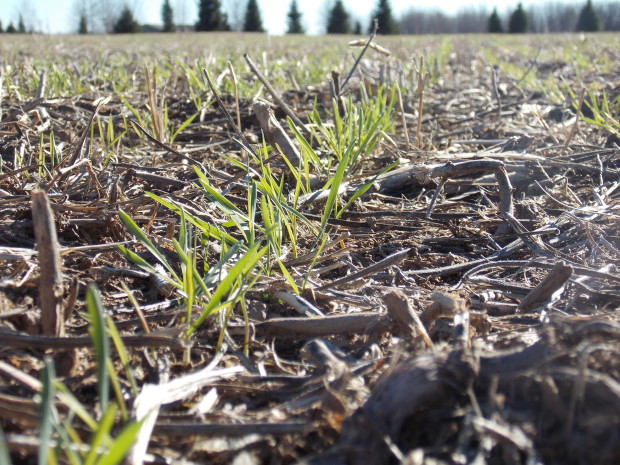We have much more to do and your continued support is needed now more than ever.
Three Things I’ve Learned from Converting to No Till and Cover Crops
As I wrap up year number two of converting my farmland to no till and cover crops, I thought it would be a good opportunity to reflect. No better time than while on the tractor planting winter wheat to think about the land and how I am striving to farm it successfully now while ensuring my sons (and future generations) have productive farmland in the future.
[youtube]http://www.youtube.com/watch?v=9Ka2NbwjjIQ[/youtube]
My thoughts quickly centered on the many barriers and obstacles to making this transition, but I also considered alternatives and found that while difficult, going to no till and cover crops has created some great opportunities.
First lesson: Other farmers are a valuable resource
Going through this process is much easier when networking with other farmers going through similar transitions, especially if they are in your area. In my first year, there were no other farmers in my area using no till and cover crops. Just recently I learned of another farmer choosing to go to no till with cover crops. The conversations since have been quite valuable for the education and information exchanged. Just 10 minutes on the phone, comparing notes with this nearby farmer provided me with insights that would help me improve my system. This type of information exchange is all the more valuable when farmers convert to less well-known systems.

Second lesson: No till makes it easier for beginning farmers to get into agriculture
No till and cover crops have allowed me and other beginning farmers an easier entry into agriculture. For those just entering the business, acquiring assets (land, cattle, equipment etc.) is often the most expensive and difficult step. The costs of some of this equipment can be truly astounding. Systems with reduced equipment requirements (such as no till or rotational grazing) lower that initial barrier to entry. By not having to purchase tillage equipment (chisel plow, disk, field cultivator and stalk shredder) and a larger tractor to power that equipment, I am able to keep costs low.
Third lesson: Farm Bill conservation programs make a difference
Despite the benefits to farmers, the environment and taxpayers (see my previous post), conservation programs which help farmers transition to these conservation practices face budget cuts in the next Farm Bill. Few programs provide as many benefits to so many, yet all of the Farm Bill proposals include some drastic cuts to conservation programs. More immediately, because of the current impasse on the Farm Bill leading to its expiration on September 30, some conservation programs cannot take new enrollments.
Take Action
With the Farm Bill debate set to begin again right after the election, speak out for wildlife and let Congress know you value Farm Bill conservation programs for the clean water and wildlife they protect. The many farmers who rely on these programs to implement good conservation practices will certainly thank you.





















